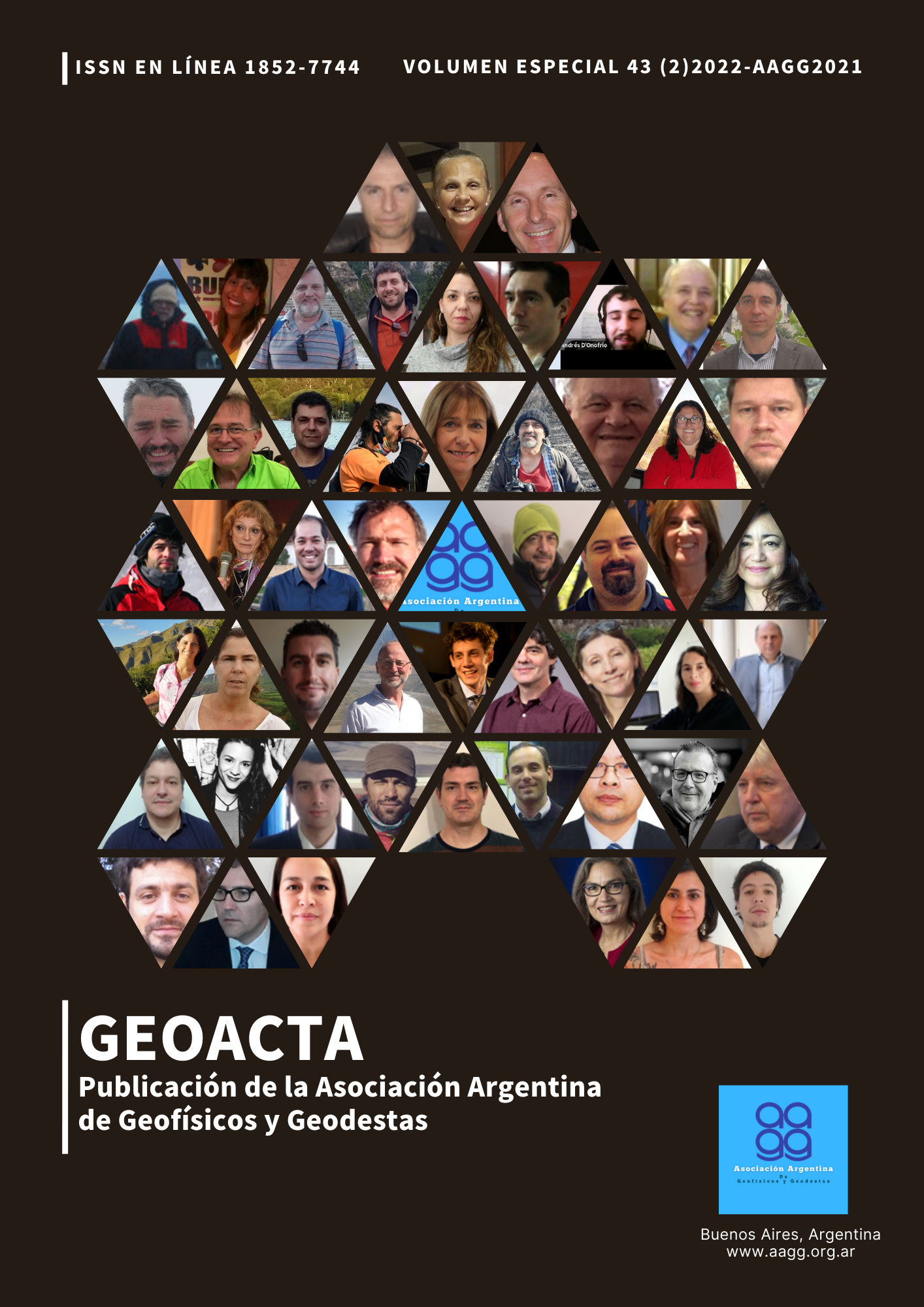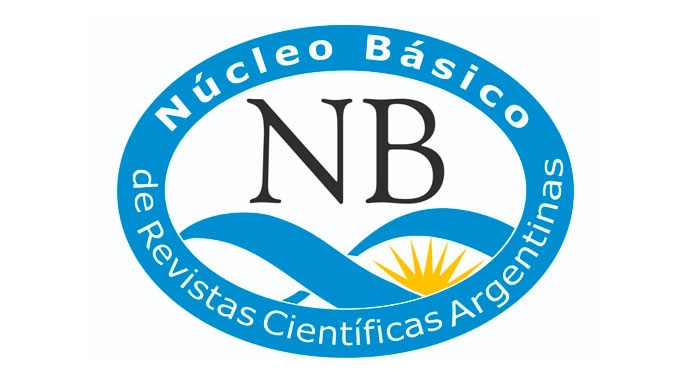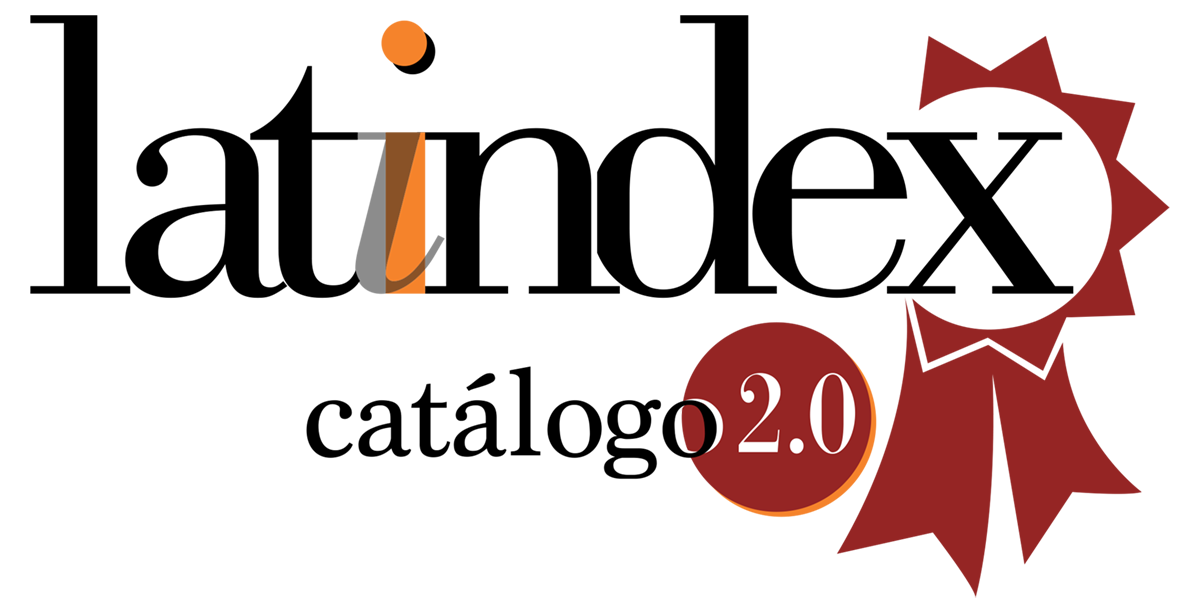Efectos de la precipitación de partículas energéticas de origen solar en la atmosfera de la Tierra
Palabras clave:
precipitación de partículas energéticas, tormenta geomagnética, densidad electrónica, foF2, NOx, ozonoResumen
La Tierra es continuamente “bombardeada” por partículas energéticas cargadas procedentes del espacio exterior que penetran en la atmósfera y pueden influir en una variedad de procesos atmosféricos.
El Sol emite ondas de radio, rayos X y partículas energéticas, además de la luz visible. El transporte de energía desde el Sol hacia la Tierra se produce de dos formas: (1) radiación electromagnética, que emite alrededor de 4 x 1033 erg/s irradiando la Tierra con 1,37x 10 3 W m-2 y (2) radiación corpuscular (el viento solar con el campo magnético interplanetario “congelado” en él y cualquier partícula solar energética que puede estar presente).
El ingreso de partículas energéticas solares a la magnetosfera de la Tierra produce efectos sobre las especies químicas de la atmosfera alta y media cuando precipitan en las zonas aurorales de ambos hemisferios guiadas por el campo geomagnético.
La ionosfera, como parte del entorno meteorológico espacial, juega un papel crucial a través de la modulación del circuito electrodinámico global, su acoplamiento a la magnetosfera y como medio clave para la comunicación, el sondeo y la navegación. Por tanto, una comprensión profunda de su variabilidad en todas las escalas de tiempo es un importante aporte al estudio de la meteorología espacial.
Como consecuencia de la intensificación de la precipitación de partículas durante periodos de tormenta geomagnética, se produce un aumento de la ionización, la creación de nitrógeno impar (NOx) y de hidrógeno impar (HOx) en la atmósfera superior, afectando la química del ozono estratosférico. Por otro lado, los campos eléctricos de origen magnetosférico, las perturbaciones atmosféricas viajeras, la circulación termosférica, y los cambios de composición química, explican las características ionosféricas de la densidad electrónica durante las distintas fases de tormentas geomagnéticas y en diferentes latitudes.
Descargas
Citas
Abdu, M. A., Batista, I. S., Piazza, L. R., Massabani, O., 1981. Magnetic storm associated enhanced particle precipitation in the South Atlantic anomaly: Evidence from VLF phase measurements, J. Geophys. Res.86, 7533–7542.
Abdu, M.A., Batista, I.S., Carrasco, A.J., Brum, C.G.M., 2005. South Atlantic magnetic anomaly ionization: A review and a new focus on electrodynamic effects in the equatorial ionosphere, Journal of Atmospheric and Solar-Terrestrial Physics 67, 1643–1657.
Abel, B., Thorne, R. M., 1999. Modeling energetic electron precipitation near the South Atlantic anomaly, J. Geophys. Res., 104, 7037–7044.
Asikainen, T., Mursula, K., 2005. Filling the South Atlantic anomaly by energetic electrons during a great magnetic storm, Geophys. Res. Lett., 32, L16102, doi:10.1029/2005GL023634
Asikainen, T., Mursula, K., 2008. Energetic electron count rates behaviour at low L-shells and its relation to the South Atlantic Anomaly, Journal of Atmospheric and Solar-Terrestrial Physics 70 (2008) 532–538. doi:10.1016/j.jastp.2007.08.061
Astafyeva, E., Zakharenkova, I., Hozumi, K., Alken, P., Coı¨sson, P., Hairston, M.R., Coley, W.R., 2018. Study of the equatorial and low latitude electrodynamic and ionospheric disturbances during the 22–23 June 2015 geomagnetic storm using ground-based and spaceborne techniques. J. Geophys. Res. Space Phys. 123, 2424–2440. https://doi.org/10.1002/2017JA024981
Akasofu, S.I. (1998). Aurora. From the Sun, Auroras, magnetic Storms, Solar Flars, Cosmic Rays. Suess, S., Tsurutani, B. (Ed.). American Geophysical Union. 1, 11.
Baker, D. N., Mason, G. M., and Mazur, J. E., 2012. A small spacecraft mission with large accomplishments. Eos, Transactions American Geophysical Union, 93(34):325-326.
Barthia, P. K., McPeters, R. D., Mateer, C. L, Flynn, L. E., Wellemeyer, C., 1996. Algorithm of the estimation of vertical ozone profiles from backscattered ultraviolet technique, J. Geophys. Res., 101, N- D13, 18793-18806.
Buonsanto, M.J., 1999. Ionospheric storms—a review. Space Sci. Rev. 88, 563–601. https://doi.org/10.1023/A:1005107532631
Brasseur, G. P., Solomon, S., 2005. Aeronomy of the Middle Atmosphere: Chemistry and Physics of the Stratosphere and Mesosphere, Springer, Third revised and enlarged edition, Netherlands.
Callis, L. B., Boughner, R. E., Baker, D. N., Mewaldt, R. A., Bernard Blake, J., Selesnick, R. S., Cummings, J. R., Natarajan, M., Mason, G. M., and Mazur, J. E.,1996. Precipitating electrons: Evidence for eects on mesospheric odd nitrogen. Geophysical research letters, 23(15):1901-1904.
Callis, L. B., Natarajan, M., Evans, D. S., and Lambeth, J. D., 1998a. Solar atmospheric coupling by electrons (SOLACE): 1.Effects of the May 12, 1997 solar event on the middle atmosphere. Journal of Geophysical Research: Atmospheres, 103(D21):28405-28419.
Callis, L. B., Natarajan, M., Lambeth, J. D., and Baker, D. N., 1998b. Solar atmospheric coupling by electrons (SOLACE): 2. Calculated stratospheric effects of precipitating electrons, 1979-1988. Journal of Geophysical Research: Atmospheres,103(D21):28421-28438.
Danilov, A.D., 2001. F2-region response to geomagnetic disturbances. J. Atmos. Sol. Terr. Phys. 63, 441–449. https://doi.org/10.1016/S1364-6826(00)00175-9
Danilov, A.D., 2013. Ionospheric F-region response to geomagnetic disturbances. Adv. Space Res. 52, 343–366. https://doi.org/10.1016/jasr.2013.04.019
Fejer, B.G., Scherliess, L., 1995. Time dependent response of equatorial ionospheric electric fields to magnetospheric disturbances. Geophys.Res. Lett. 22 (7), 851–854. ttps://doi.org/10.1029/95GL00390
Fejer, B.G., Scherliess, L., 1997. Empirical models of storm time equatorial zonal electric fields 24,047–24,056. J. Geophys. Res. 102 (A11). https://doi.org/10.1029/97JA02164
Fuller-Rowell, T.J., Codrescu, M., Forbes, J.M., 1997. Neutral density specification using first principle models: semi-annual variations and storms. Adv. Astronaut. Sci. 97, 565–581.
Hargreaves, J. K. ,1992. The solar-terrestrial environment: an introduction to geospace the science of the terrestrial upper atmosphere, ionosphere, and magnetosphere. Cambridge University Press.
Hartmann, G. A., Pacca, I. G., 2009. Time evolution of the South Atlantic Magnetic Anomaly, Annals of the Brazilian Academy of Sciences, 81(2): 243-255.
Jackman, C., Frederick, J., and Stolarski, R., 1980. Production of odd nitrogen in the stratosphere and mesosphere: An intercomparison of source strengths. Journal of Geophysical Research: Oceans, 85(C12):7495-7505.
Jackman, Ch. H., 1991. Effects of Energetic Particles on Minor Constituents of the Middle Atmosphere, J. Geomag. Geoelectr., 43, Suppl., 637-646.
Jackman, C. H., Cerniglia, M. C., Nielsen, J. E., Allen, D. J., Zawodny, J. M., McPeters, R. D., Douglass, A. R., Rosenfield, J. E., and Rood, R. B. , 1995. Two-dimensional and three-dimensional model simulations, measurements, and interpretation of the influence of the October 1989 solar proton events on the middle atmosphere. Journal of Geophysical Research: Atmospheres, 100(D6):11641-11660.
Jackman, C. H., McPeters, R. D., Labow, G. J., Fleming, E. L., Praderas, C. J., and Russell, J. M., 2001. Northern Hemisphere atmospheric effects due to the July 2000 solar proton event. Geophysical Research Letters, 28(15):2883-2886.
Jackman, C. H., DeLand, M. T., Labow, G. J., Fleming, E. L., Weisenstein, D. K., Ko, M. K., Sinnhuber, M., and Russell, J. M., 2005. Neutral atmospheric influences of the solar proton events in October-November 2003. Journal of Geophysical Research: Space Physics, 110(A9).
Jackman, C. H., Roble, R. G., and Fleming, E. L., 2007. Mesospheric dynamical changes induced by the solar proton events in OctoberNovember 2003. Geophysical Research Letters, 34(4).
Jackman, C.H., Randall, C.E., Harvey, V.L., Wang, S., Fleming, E.L., Lopez-Puertas, M., Funke, B., Bernath, P. F., 2014. Middle atmospheric changes caused by the January and March 2012 solar proton events, Atmos. Chem. Phys.,14, 1025–1038. doi: https://doi.org/10.5194/acp-14-1025-2014, 2014
Lastovicka, J, & Mich, P., 1999. Is ozone affected by geomagnetic storms? Adv. Space Res., 24 (5), 631-640.
Lastovicka, J, & Krizan, P., 2005. Geomagnetic Storms, Forbush decreases of cosmic rays and total ozone at northern higher middle latitudes, Journal of Atmospheric and Solar Terrestrial Physics, 67, 119-124.
Lastovicka, J, & Krizan, P., 2009. Impact of strong geomagnetic storms on total ozone at southern higher middle latitudes Stud, Geophys, Geod,, 53, 151−156.
Lopez-Puertas, M., Funke, B., Gil-Lopez, S., von Clarmann, T., Stiller, G. P., Hopfner, M., Kellmann, S., Fischer, H., Jackman, C. H., 2005. Observation of NOx enhancement and ozone depletion in the Northern and Southern Hemispheres after the October–November 2003 solar proton events, J. Geophys. Res., 110, A09S43, doi: https://doi.org/10.1029/2005JA011050
Kivelson, M. G. and Russell, C.T., 1995. Introduction to space physics. Cambridge University Press.
Mansilla, G. A. and Zossi, M. M. , 2019. Effects on the equatorial and low latitude thermosphere and ionosphere during the 19–22 December 2015 geomagnetic storm period, Advances in Space Research, https://doi.org/10.1016/j.asr.2019.09.025
Mikhailov, A.V., Leschinskaya, T.Yu, 1991. On the mechanism of day time F2-layer negative disturbances at the geomagnetic equator. Geomag. Aeron. 31, 1027–1031.
Mironova, I. A., Aplin, K. L., Arnold, F., Bazilevskaya, G. A., Harrison, R. G., Krivolutsky, A. A., Nicoll, K. A., Rozanov, E. V., Turunen, E., and Usoskin, I. G., 2015. Energetic particle influence on the Earth's atmosphere. Space Science Reviews, 194(1):1-96.
Ngwira, C.M., Lee-Anne McKinnell, P.J., Cilliers, Coster, A.J., 2012. Ionospheric observations during the geomagnetic storm events on 24–27 July 2004: Long-duration positive storm effects. J. Geophys. Res.117, A00L02. https://doi.org/10.1029/2011JA016990
Prölss, G.W., 1980. Magnetic storm associated perturbations of the upper atmosphere: recent results obtained by satellite-borne gas analyzers. Rev. Geophys. Space Phys. 18, 183–202. https://doi.org/10.1029/RG018i001p00183
Prölss, G.W., 1995. Ionospheric F-region storms. Handbook of Atmospheric Electrodynamics, vol. 2. CRC Press, Boca Raton, pp. 195–248.
Randall, C., Rusch, D., Bevilacqua, R., Hoppel, K., and Lumpe, J., 1998. Polar ozone and aerosol measurement (POAM) II stratospheric NO2, 19931996. Journal of Geophysical Research: Atmospheres, 103(D21):28361-28371.
Randall, C., Siskind, D., and Bevilacqua, R., 2001. Stratospheric NOx enhancements in the southern hemisphere vortex in winter/spring of 2000. Geophysical Research Letters, 28(12):2385-2388.
Rawat, R., Echer, E., Gonzalez, W.D. , 2018. How different are the solar wind-interplanetary conditions and the consequent geomagnetic activity during the ascending and early descending phases of the solar cycles 23 and 24?. J. Geophys. Res. Space Phys. 123, 6621–6638. https://doi.org/10.1029/2018JA025683
Rinsland, C., Gunson, M., Salawitch, R., Newchurch, M., Zander, R., Abbas, M.,Abrams, M., Manney, G., Michelsen, H., Chang, A., 1996. ATMOS measurements of H2O + 2CH4 and total reactive nitrogen in the November 1994 Antarctic stratosphere: Dehydration and denitrification in the vortex. Geophysical research letters, 23(17):2397-2400.
Rishbeth, H., Garriott, O.K., 1969. Introduction to Ionospheric Physics.Academic press, New York and London.
Rohen, G., Von Savigny, C., Sinnhuber, M., Llewellyn, E., Kaiser, J., Jackman, C., Kallenrode, M.-B., Schröter, J., Eichmann, K.-U., Bovensmann, H., 2005. Ozone depletion during the solar proton events of October/November 2003 as seen by SCIAMACHY. Journal of Geophysical Research: Space Physics, 110(A9).
Rozanov, E., Callis, L., Schlesinger, M., Yang, F., Andronova, N., and Zubov, V., 2005). Atmospheric response to NOy source due to energetic electron precipitation. Geophysical Research Letters, 32(14).
Rozanov, E., Calisto, M., Egorova, T., Peter, T., and Schmutz, W., 2012. Influence of the precipitating energetic particles on atmospheric chemistry and climate. Surveys in geophysics, 33(3-4):483-501.
Russell III, J. M., Solomon, S., Gordley, L. L., Remsberg, E. E., and Callis, L. B., 1984. The variability of stratospheric and mesospheric NO2 in the polar winter night observed by LIMS. Journal of Geophysical Research: Atmospheres, 89(D5):7267-7275.
Seppälä, A., 2007. Observations of production and transport of NOx formed by energetic particle precipitation in the polar night atmosphere. PhD thesis, Faculty of Science of the University of Helsinki.
Seppälä, A., Matthes, K., Randall, C. E., Mironova, I. A., 2014. What is the solar influence on climate? Overview of activities during CAWSES-II. Progress in Earth and Planetary Science Springer Open Journal, 1:24.
Siskind, D. E., 2000. On the coupling between middle and upper atmospheric odd nitrogen. Washington DC American Geophysical Union Geophysical Monograph Series, 123:101-116.
Siskind, D. E., Bacmeister, J., Summers, M., and Russell III, J., 1997. Two-dimensional model calculations of nitric oxide transport in the middle atmosphere and comparison with Halogen Occultation Experiment data. Journal of Geophysical Research: Atmospheres, 02(D3):3527-3545.
Solomon, S., Crutzen, P. J., and Roble, R. G., 1982. Photochemical coupling between the thermosphere and the lower atmosphere: I. Odd nitrogen from 50 to 120 km. Journal of Geophysical Research: Oceans, 87(C9):7206-7220.
McPeters, R. D., P. K. Bhartia, Arlin J. Krueger, and Jay R. Herman. 1998. Earth Probe Total Ozone Mapping Spectrometer (TOMS), Data Products User’s Guide, Goddard Space Flight Center, Greenbelt, Maryland, NASA Reference Publication.
Pinto Jr O., Gonzalez W. D., 1989a. Energetic electron precipitation at the South Atlantic Magnetic Anomaly: a review.J Atmos Solar-Terr Phys 51(5):351–365.
Pinto Jr O., Gonzalez W. D., Gonzalez, A.L.C.1989b. Time Variations of X ray fluxes at the South Atlantic Magnetic Anomaly in association with a strong geomagnetic storm. Journal of Geophysical Research, Vol. 94, N. A12, pages 17,275-17,280.
Pinto Jr O., Gonzalez, W. D., Pinto, I. R. C. A., Gonzalez, A. C., Mendes Jr, O., 1992. The South Atlantic Magnetic Anomaly: three decades of research. J Atmos Solar-Terr Phys 54:1129–1134.
Rozanov, E, Calisto, M., Egorova, T., Peter, T., Schmutz, W., 2012. Influence of the precipitating energetic particles on atmospheric chemistry and climate. Surv. Geophys. 33, 483–501.
Selesnick, R.S., Blake, J.B., Mewaldt, R.A., 2003. Atmospheric losses of radiation belt electrons. Journal of Geophysical Research 108 (A12), 1468.
Sepällä, A., Verronen, P. T., Kyrola, E., Hassinen, S., Backman, L., Hauchecorne, A., Bertaux, J. L., Fussen, D., 2004. Solar proton events of October-November 2003: Ozone depletion in the Northern Hemisphere polar winter as seen by GOMOS/Envisat, Geophys. Res. Lett., 31, L19107, doi: https://doi.org/10.1029/2004GL021042
Sepällä, A., Verronen, P. T., Sofieva, V. F., Tamminen, J., Kyrola, E., Rodger, C. J., Clilverd, M. A., 2006. Destruction of the tertiary ozone maximum during a solar proton event, Geophys. Res. Lett., 33, L07804, doi: https://doi.org/10.1029/2005GL025571
Seppälä, A., Matthes, K., Randall, C. E., Mironova, I. A., 2014. What is the solar influence on climate? Overview of activities during CAWSES-II. Progress in Earth and Planetary Science Springer Open Journal, 1:24.
Solomon, S., Crutzen, P. J., Roble, R. G., 1982. Photochemical coupling between the thermosphere and the lower atmosphere 1. Odd nitrogen from 50 to 120 km, J. Geophys. Res., 87, 7206–7220.
Turunen, E., Verronen, P. T., Seppälä, A., Rodger, C. J., Clilverd, M. A., Tamminen, J., Enell C. F., Ulich, Th., 2009. Impact of different energies of precipitating particles on NOx generation in the middle and upper atmosphere during geomagnetic storms, J. Atmos. and Solar-Terr. Phys., 71, pp. 1176-1189, doi: https://doi.org/10.1016/j.jastp.2008.07.005
Von Clarmann, T., Funke, B., Lopez-Puertas, M., Kellmann, S., Linden, A., Stiller, G. P., Jackman, C. H., Harvey, V. L., 2013. The solar proton events in 2012 as observed by MIPAS, Geophys. Res. Lett., 40, 2339–2343, doi: https://doi.org/10.1002/grl.50119
Zossi, M. M. and Fernandez, P. (2010), Trends in Total Ozone and the effect of the Equatorial Zonal Wind QBO, Journal of Atmospheric and Solar-Terrestrial Physics, Vol. 72, 565-569.
Zossi de Artigas, M., Zotto, E.M., Mansilla, G.A. Fernandez de Campra, P., 2016: Effects of energetic particles precipitation on stratospheric ozone in the Southern Hemisphere. Adv. Space Res. 58, 2080-2089. http://dx.doi.org/10.1016/j.asr.2016.02.019
Zou, H., Zong, Q. G., Parks, G. K., Pu, Z. Y., Chen, H. F., and Xie, L., 2011: Response of high-energy protons of the inner radiation belt to large magnetic storms, J. Geophys. Res., 116, A10229, doi: https://doi.org/10.1029/2011JA016733
Zossi, M.M., Zotto, E.M., and Mansilla, G.A, 2021: Can Geomagnetic Storms Affect Stratospheric O3 and NO x in the South Atlantic Anomaly Zone? Pure and Applied Geophysics, 178(1), pp. 141–154
Descargas
Publicado
Cómo citar
Número
Sección
Licencia

Esta obra está bajo una licencia internacional Creative Commons Atribución-NoComercial-CompartirIgual 4.0.
A partir de 2022 (Vol. 43 número 2) los artículos se publicarán en la revista bajo una licencia Creative Commons Atribución- NoComercial-CompartirIgual 4.0 Internacional (CC BY-NC-SA 4.0)
Acorde a estos términos, el material se puede compartir (copiar y redistribuir en cualquier medio o formato) y adaptar (remezclar, transformar y crear a partir del material otra obra), siempre que a) se cite la autoría y la fuente original de su publicación (revista y URL de la obra), b) no se use para fines comerciales y c) se mantengan los mismos términos de la licencia.
Previo a esta fecha los artículos se publicaron en la revista bajo una licencia Creative Commons Atribución (CC BY)
En ambos casos, la aceptación de los originales por parte de la revista implica la cesión no exclusiva de los derechos patrimoniales de los/as autores/as en favor del editor, quien permite la reutilización, luego de su edición (posprint), bajo la licencia que corresponda según la edición.
Tal cesión supone, por un lado, que luego de su edición (posprint) en Revista GEOACTA de la Asociación de Geofísicos y Geodestas las/os autoras/es pueden publicar su trabajo en cualquier idioma, medio y formato (en tales casos, se solicita que se consigne que el material fue publicado originalmente en esta revista); por otro, la autorización de los/as autores/as para que el trabajo sea cosechado por SEDICI, el repositorio institucional de la Universidad Nacional de La Plata, y sea difundido en las bases de datos que el equipo editorial considere adecuadas para incrementar la visibilidad de la publicación y de sus autores/as.
Asimismo, la revista incentiva a las/os autoras/es para que luego de su publicación en Revista de la Asociación de Geofísicos y Geodestas depositen sus producciones en otros repositorios institucionales y temáticos, bajo el principio de que ofrecer a la sociedad la producción científica y académica sin restricciones contribuye a un mayor intercambio del conocimiento global.












